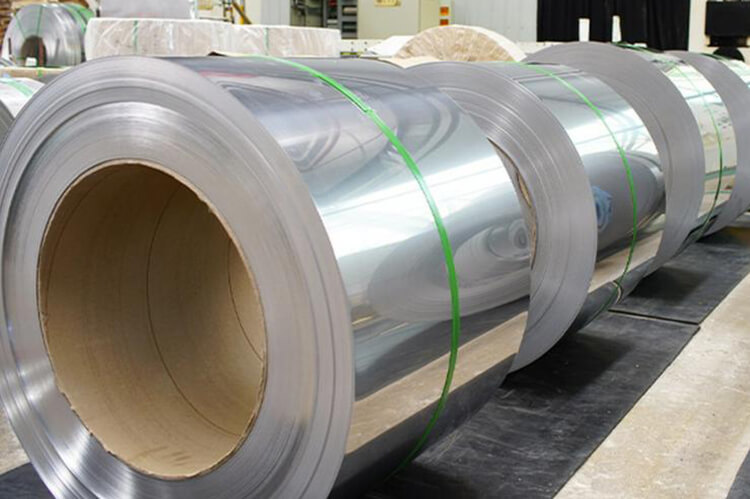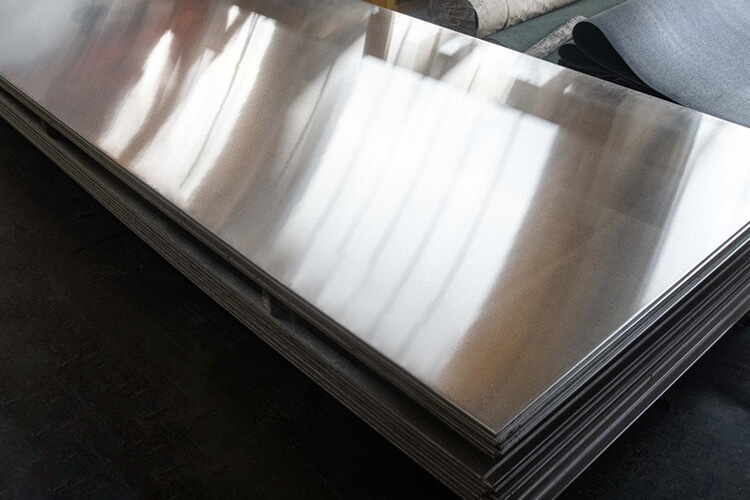Pros & Cons of 304 Stainless Steel in Each of Its Applications
Jan 09,2025
304 stainless steel is one of the most widely used alloys due to its excellent balance of strength, corrosion resistance, and formability. Below are some pros and cons of using 304 stainless steel in various applications.
1. Food Processing Equipment
Pros:
Corrosion Resistance: 304 stainless steel is renowned for resisting rust and corrosion, even when exposed to common food acids (such as citric and lactic acid) and moist environments. This makes it ideal for food handling, storage, and preparation.
Ease of Cleaning: Its smooth, non-porous surface allows for easy cleaning and sanitization, a critical requirement in food processing plants, where hygiene standards must be met. 304 stainless steel can withstand repeated washings, including high-pressure washing and chemical cleaners.
Non-Reactive: 304 stainless steel does not react with food ingredients, meaning it does not alter the taste, color, or nutritional quality of food. This non-reactivity is essential for food safety.
Durability: It can withstand the mechanical wear and tear associated with food processing equipment, reducing the need for frequent repairs or replacements.
Cons:
Not Suitable for Highly Acidic or Alkaline Environments: In extreme cases (such as when exposed to very high levels of acid or alkali), 304 stainless steel can corrode or lose its surface integrity. For such applications, higher-grade alloys like 316 might be more appropriate.
Cost: 304 stainless steel is more expensive than other materials like aluminum or carbon steel, which may increase the cost of food processing equipment.
Limited Thermal Conductivity: While 304 stainless steel has decent thermal conductivity, it is not as efficient at transferring heat as other metals, such as copper, which might be a disadvantage in certain food processing applications requiring quick temperature changes.
2. Architecture and Construction
Pros:
Aesthetic and Visual Appeal: 304 stainless steel is often used in architectural features such as railings, facades, and structural elements due to its sleek and shiny surface. It also holds its appearance over time, maintaining its luster without requiring frequent polishing.
Corrosion Resistance: Its resistance to corrosion from weather conditions, air, and environmental pollutants makes it ideal for both indoor and outdoor construction, particularly in coastal areas with high humidity or salt exposure.
Strength and Structural Integrity: 304 stainless steel has excellent tensile strength, making it ideal for structural applications that require both aesthetics and durability. It can endure high loads and resist deformation, which is crucial for long-lasting infrastructure.
Low Maintenance: Stainless steel requires little maintenance, as it resists the buildup of grime, mold, and mildew, keeping structures clean and safe with minimal effort.
Cons:
Cost: The high cost of 304 stainless steel can be a barrier in budget-sensitive construction projects. It's generally more expensive than alternative materials like mild steel or aluminum.
Scratches and Fingerprints: While durable, 304 stainless steel can show visible marks, such as fingerprints or scratches, especially when used in high-touch areas, diminishing its pristine appearance over time.
Welding Complexity: Although 304 stainless steel is relatively easy to weld, it requires attention to detail during welding to avoid surface discoloration or contamination from contaminants.
3. Medical Equipment
Pros:
Biocompatibility: 304 stainless steel is biocompatible, making it safe for use in medical applications where it comes into contact with human tissues or bodily fluids. This property is essential for surgical instruments, prosthetics, and implants.
Corrosion Resistance: 304's resistance to bodily fluids, sterilization processes (such as autoclaving), and a variety of disinfectants makes it a top choice in the medical field.
Strength and Durability: It offers high tensile strength, which is crucial for medical instruments that must withstand considerable force during use without deformation. It can also maintain its sharpness in surgical tools like scalpels and scissors.
Ease of Sterilization: 304 stainless steel is easy to sterilize and sanitize, ensuring that medical devices are free of bacteria, viruses, and other contaminants between uses.
Cons:
Magnetic Properties: While 304 stainless steel is generally non-magnetic, certain variations or cold-worked versions may exhibit magnetic properties. This can be problematic for certain medical applications, such as MRI machines, where non-magnetic materials are required.
Not Ideal for Harsh Chemicals: 304 stainless steel may not perform well when exposed to very strong acids (e.g., hydrochloric or sulfuric acid) or chlorine-based sterilization chemicals, which can lead to corrosion or surface degradation.
Limited Resistance to High-Temperature Sterilization: For extremely high-temperature sterilization, other alloys (like 316 or higher grades of stainless steel) might be better suited due to their superior resistance to high temperatures.
4. Automotive Components
Pros:
Corrosion Resistance: 304 stainless steel’s resistance to road salts, moisture, and environmental pollutants makes it ideal for automotive applications that are exposed to harsh outdoor conditions, such as exhaust systems, trim, and body parts.
Aesthetic Appeal: It provides an attractive finish, often used in automotive design elements like polished bumpers, wheel rims, and exhaust tips.
Strength: The high strength-to-weight ratio of 304 stainless steel ensures automotive components are both durable and lightweight, ontributing to vehicle longevity and performance.
Heat Resistance: Stainless steel’s ability to withstand high temperatures makes it suitable for use in engine components, exhaust systems, and heat shields where heat resistance is necessary.
Cons:
Weight: While 304 stainless steel is relatively strong, it is heavier than alternatives like aluminum, which can be a disadvantage in applications where weight reduction is a priority (e.g., high-performance racing cars or electric vehicles).
Cost: The expense of stainless steel components can increase manufacturing costs, especially for large-scale production. In cost-sensitive automotive industries, using stainless steel in non-critical components may not always be justified.
Susceptibility to Scratching: Although durable, the surface of 304 stainless steel can be prone to scratches or scuffing, especially in areas that are subject to heavy contact or abrasion.
5. Marine Applications
Pros:
Excellent Resistance to Saltwater: 304 stainless steel's resistance to saltwater corrosion makes it ideal for marine environments, such as boat fittings, hulls, and propellers.
Durability in Harsh Conditions: Stainless steel's ability to resist physical damage from water, storms, and physical impacts ensures that marine components last longer, even under constant exposure to saltwater and UV rays.
Low Maintenance: Compared to other metals used in marine applications, 304 stainless steel requires less maintenance, as it resists rusting, pitting, and scaling.
Cons:
Pitting Corrosion in Chloride-Rich Environments: Despite its corrosion resistance, 304 stainless steel is vulnerable to pitting when exposed to chloride ions found in seawater. This can lead to localized corrosion over time, especially in areas where salt accumulates (e.g., weld joints or crevices).
Not the Best for Long-Term Saltwater Exposure: For long-term exposure to harsh marine environments, alloys like 316 stainless steel, which contain molybdenum, are more resistant to pitting and stress corrosion cracking.
High Initial Cost: While stainless steel components tend to last longer, the initial investment in 304 stainless steel marine parts can be more expensive than alternatives like aluminum or plastic.
6. Chemical Processing
Pros:
Corrosion Resistance to Many Chemicals: 304 stainless steel has a wide range of resistance to various acids, alkalis, and gases, making it suitable for use in chemical reactors, storage tanks, and piping systems in chemical processing plants.
Formability: It can be easily fabricated into pipes, tubes, and tanks, which is particularly important in industries where custom shapes are necessary for efficient fluid handling.
Long Service Life: 304 stainless steel's ability to withstand corrosion and maintain structural integrity under normal conditions leads to a long service life with fewer maintenance needs.
Cons:
Not Suitable for Strong Acids: 304 stainless steel can corrode in environments with strong acids, such as hydrochloric or sulfuric acid, making it unsuitable for specific aggressive chemical environments.
Higher Maintenance in Harsh Conditions: In environments with high concentrations of certain chemicals, 304 stainless steel may need more frequent inspection and maintenance due to potential corrosion.
Cost: Like in many industrial applications, the cost of 304 stainless steel may make it less appealing when budget constraints exist.
7. Heat Exchangers and Boilers
Pros:
Thermal Stability: 304 stainless steel can perform well in moderate temperature ranges, making it an appropriate choice for heat exchangers and boiler components that experience frequent thermal cycling.
Corrosion Resistance to Water and Steam: It resists corrosion caused by water and steam, which are common in boiler systems, thus enhancing the longevity and efficiency of such systems.
Durability in Heat: 304 stainless steel is capable of withstanding significant temperature fluctuations without becoming brittle or losing its mechanical properties.
Cons:
Limitations in High-Temperature Applications: For very high-temperature applications (above 800°F or 427°C), 304 stainless steel may suffer from decreased strength and creep resistance. Alloys like 310 or 316 may perform better under these extreme conditions.
Scaling and Surface Degradation: In very hot environments, 304 stainless steel can develop scale or oxide layers, which may affect heat transfer efficiency or lead to premature failure in some systems.
8. Piping and Tubing
Pros:
Corrosion Resistance: 304 stainless steel is commonly used for piping in food and beverage, pharmaceutical, and water treatment industries due to its corrosion resistance, making it ideal for systems transporting sensitive fluids.
Flexibility and Durability: It offers a long service life and maintains its integrity under both high-pressure and low-pressure conditions.
Weldability: The material can be easily welded to create custom piping systems, which is crucial in industries with specific requirements for fluid transport.
Cons:
Not Ideal for Highly Corrosive Fluids: 304 stainless steel is not the best choice for transporting highly corrosive fluids such as strong acids or bleach. The material’s corrosion resistance is not as effective in extreme conditions compared to other alloys, like 316.
Weight: In applications requiring weight efficiency (e.g., aerospace or specific automotive applications), the weight of stainless steel pipes can be a disadvantage compared to alternatives like plastic piping.
9. Storage Tanks
Pros:
Long-Lasting Resistance: 304 stainless steel's resistance to rust, corrosion, and staining makes it an ideal material for storage tanks used in food and beverage, chemical, and water storage applications.
Non-Reactive: 304 stainless steel ensures that stored products retain their quality, without contamination from the container material.
Durable and Strong: Its robustness ensures that storage tanks are resilient to impacts, vibrations, and environmental exposure, enhancing their overall lifespan.
Cons:
Cost: Stainless steel storage tanks are typically more expensive than alternatives made from other materials like plastic, carbon steel, or fiberglass.
Limited Resistance to High-Temperature Fluids: 304 may not be suitable for storing fluids at high temperatures (e.g., hot liquids or chemicals). For these applications, alloys with better high-temperature resistance, like 316 or duplex stainless steels, may be preferable.
Conclusion
304 stainless steel is a versatile material used across multiple industries due to its strength, corrosion resistance, and ease of fabrication. It is particularly favored in applications requiring durability, aesthetic appeal, and minimal maintenance. However, its cost, susceptibility to extreme environments, and weight may limit its use in more specialized settings. Depending on the specific requirements of the application, alternatives such as 316 stainless steel, aluminum, or carbon steel may offer better performance or cost-effectiveness.
Previous Page
Latest News
Surface Selection of Stainless Steel
Jul 28,2025
Nickel Alloys: An In-Depth Overview
Feb 08,2025
View More






